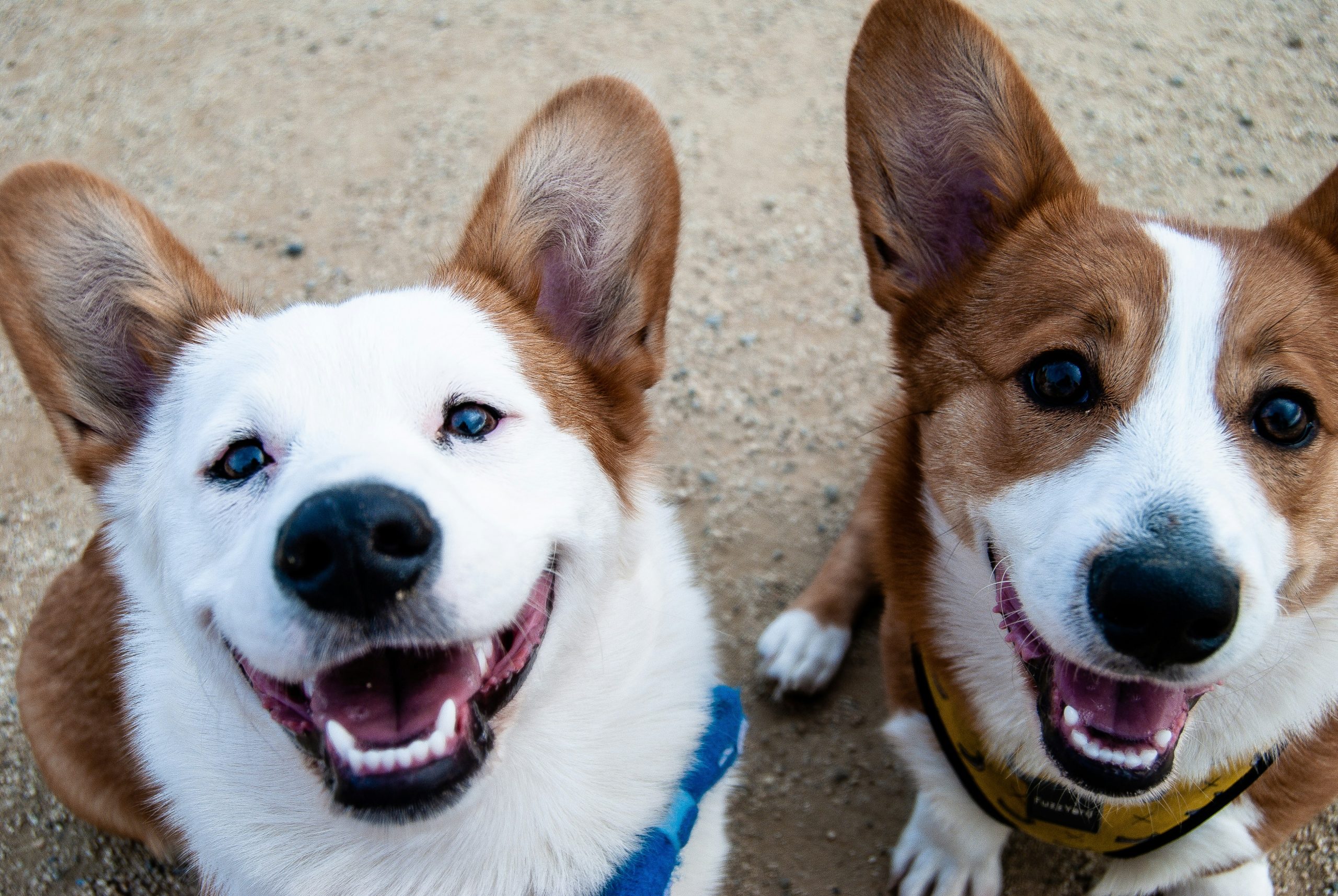Enhancing Canine Behavior: The Ultimate Guide to Hand Feeding Your Dog
A step-by-step guide to using hand feeding as a powerful tool to improve dog behavior and strengthen the bond between dogs and their owners.
Introduction to Hand Feeding for Behavioral Improvement in Dogs
Hand feeding is a powerful technique that can be effectively utilized to address various behavioral issues in dogs. By feeding dogs by hand, owners can establish positive associations and reinforce desirable behaviors, ultimately helping in the training process. One of the key benefits of hand feeding is the opportunity it provides to strengthen the bond between dogs and their owners. For instance, hand feeding allows for close physical interaction during mealtimes, fostering a sense of trust and connection between the dog and its owner. This bond is crucial for enhancing communication and understanding, which are essential components of effective behavioral improvement strategies.
Moreover, hand feeding plays a pivotal role in promoting trust and respect in dog-human interactions. When dogs are hand-fed, they learn to associate human hands with positive experiences like food and care. This association helps in building a foundation of trust, as the dog learns to rely on the owner for sustenance and comfort. Additionally, the respect cultivated through hand feeding stems from the structured routine it establishes. Dogs thrive on predictability and consistency, and by incorporating hand feeding into their daily schedule, owners can create a stable environment that supports emotional well-being and behavioral development.
Understanding Hand Feeding for Behavioral Improvement
Hand feeding is a valuable behavior modification technique that goes beyond just providing a meal; it fosters a deeper bond between the dog and its owner. By offering food directly from the hand, dogs learn to trust and respect human hands while being fed. For example, a dog that may have shown food aggression or possessiveness can learn through hand feeding that mealtime is a positive and non-confrontational interaction. This gradual process helps in reshaping the dog’s behavior by creating positive associations with feeding time.
Moreover, hand feeding can be an effective tool in addressing specific behavioral issues such as resource guarding. By hand feeding, dogs understand that valuable resources come from their human companions, reinforcing the idea of sharing and reducing possessive behaviors. This technique can also be particularly helpful for rescue dogs or those with a history of trauma, as it allows for a gentle and controlled approach to building trust and confidence in the dog-human relationship. Through consistent hand feeding sessions, dogs can develop a sense of security and predictability, which are essential for addressing behavioral concerns and creating a harmonious environment at home.
Getting Started with Hand Feeding
When starting hand feeding with your dog, it’s crucial to choose suitable food options that align with your furry friend’s preferences and nutritional needs. For example, if your dog enjoys chicken or cheese, incorporating these tasty treats during hand feeding sessions can make the experience more enjoyable and rewarding for them. Additionally, considering any dietary restrictions or allergies your dog may have is essential to ensure their well-being and health.
Moreover, the gradual introduction of hand feeding is key to a successful transition. Begin by offering small amounts of food directly from your hand to the dog, allowing them to become comfortable with this new feeding method. For instance, if your dog is initially hesitant, you can start by mixing their regular food with a high-value treat to pique their interest and create a positive association with hand feeding. Over time, as your dog becomes more accustomed to hand feeding, you can gradually increase the frequency and duration of these sessions to reinforce positive behaviors and strengthen your bond.
Creating a serene environment for hand feeding is equally important. By minimizing distractions and noise during feeding times, you can help your dog focus on the interaction and build trust with you as their caregiver. For instance, choosing a quiet corner in your home away from loud appliances or external disturbances can set the stage for a calming and enjoyable hand feeding experience. This peaceful setting not only enhances the effectiveness of hand feeding but also fosters a sense of security and comfort for your dog, paving the way for improved behavior and a stronger relationship between you and your canine companion.
Implementing the Hand Feeding Process
When implementing the hand feeding process, it is crucial to make it a part of the dog’s daily routine to reinforce good behavior and obedience. By incorporating hand feeding into the daily schedule, the dog learns to associate positive actions with the reward of food, promoting desirable behavior. For example, if a dog struggles with impulse control or jumping, hand feeding can be used as a tool to teach the dog to remain calm and patient before receiving food, ultimately addressing these behavioral issues.
Moreover, using hand feeding as a training tool allows the owner to assess the dog’s progress and adjust the approach accordingly. For instance, if a dog shows signs of improvement in following commands or displays more patience during hand feeding, it indicates that the training is effective. Monitoring the dog’s body language and responses during hand feeding sessions provides valuable insights into the dog’s emotional state and helps in reinforcing positive behaviors. As the dog demonstrates improved behavior over time, it is essential to gradually reduce the frequency of hand feeding sessions. This transition helps the dog adapt to regular feeding methods while still incorporating the positive reinforcement techniques learned through hand feeding, ensuring long-term behavioral improvement.
Common Mistakes to Avoid
When implementing hand feeding for behavioral improvement in dogs, it is essential to recognize common mistakes to ensure its effectiveness. One common error to avoid is using hand feeding as a standalone method without incorporating proper training or behavioral modification strategies. Hand feeding should complement a comprehensive training approach, reinforcing positive behaviors and obedience.
Moreover, it is crucial to pay attention to the dog’s cues during hand feeding sessions. Forcing a dog to eat when it displays signs of discomfort or reluctance can create negative associations with the process. By respecting the dog’s signals and allowing it to feel comfortable during hand feeding, trust and a positive feeding routine can be established. For example, if a dog hesitates to take food from your hand, it may indicate a lack of comfort with the situation, requiring a gentle and patient approach to build confidence.
Consistency is another key factor in successful hand feeding. Maintaining a regular schedule and approach to hand feeding sessions can help prevent confusion and potential behavioral regression in dogs. Additionally, it is important to monitor for any signs of excessive dependency or resource guarding behaviors that may develop as a result of hand feeding. By being mindful of these common mistakes, dog owners can enhance the effectiveness of hand feeding as a behavioral improvement tool while building a stronger bond with their canine companions.
Ensuring Safety and Effectiveness of Hand Feeding
When embarking on the journey of hand feeding your dog for behavioral improvement, it is crucial to seek guidance from a professional dog trainer or behaviorist to ensure the correct implementation of hand feeding techniques. These experts can provide valuable insights into tailoring the hand feeding process to address specific behavioral issues effectively. For example, a professional may recommend adjusting the feeding schedule or using particular food types to cater to your dog’s individual needs and preferences, thereby maximizing the benefits of hand feeding for behavioral improvement.
Additionally, it is essential to check for any underlying medical conditions that may impact your dog’s eating behavior or response to hand feeding. By consulting with a veterinarian, you can rule out any health concerns that could be influencing your dog’s behavior during feeding sessions. For instance, if a dog shows aversion to hand feeding despite being typically food-motivated, it could signal an underlying dental issue causing discomfort while eating. Identifying and addressing such issues promptly can ensure that hand feeding is a positive and stress-free experience for your furry companion.
Moreover, monitoring your dog’s weight and nutritional intake is key to preventing overfeeding or deficiencies when implementing hand feeding. By keeping track of your dog’s body condition and adjusting the portion sizes accordingly, you can maintain a healthy weight and dietary balance. Furthermore, incorporating a variety of feeding methods, such as using puzzle feeders or food-dispensing toys in addition to hand feeding, can help keep your dog mentally stimulated and prevent boredom with the feeding routine. This diversity in feeding approaches not only adds enrichment to your dog’s daily life but also enhances the effectiveness of hand feeding as a behavioral improvement tool.




